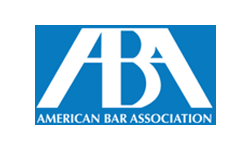
When you file a personal injury lawsuit, you will hear the term “negligence” throughout the process. In most situations, you received injuries due to the negligence of another person, business, or entity.
At Bianca | Matkins, we know that negligence plays a major role in these cases. Did you know that there are different types of negligence? Determining the type could affect the outcome of your case and settlement.
What Is the most common form of negligence? Let’s examine that answer in this blog.
What Is Negligence?
Before we look at the types of negligence, what does this concept mean in the context of a personal injury case?
Negligence refers to the failure to exercise the expected level of care in a particular situation. This is considered negligence when a person or entity fails to uphold their duty towards another person or entity. In many cases, the victim may be entitled to take legal action against the party responsible for their injuries or damages.
For the victim to prove negligence, they must establish four key elements:
- First, the defendant needs to demonstrate a duty of care. With that, the defendant had a responsibility to prevent harm to others. In these situations, it would be a doctor providing adequate care for a patient or a driver taking steps to drive safely on the road.
- In personal injury cases, the victim needs to prove that the defendant breached that duty. With that, the defendant failed to take reasonable steps to prevent harm, injuries, or losses.
- As a result of the defendant’s breach, the victim suffered some injury or damage. If it weren’t for the actions or inactions of the defendant, then the victim would not have experienced any losses.
- The last element focuses on the injury or damage. Without damages, there is no case. Physical harm, emotional distress, financial loss, or property damage are all examples of types of damages that the victim can seek compensation for.
Now that negligence has been defined, which one is the most common?
Common Type of Negligence
One of the most common types of negligence is ordinary negligence. As stated above, this is the failure of an individual or entity to exercise reasonable care under similar circumstances. This type of negligence can be found in personal injury cases involving car accidents, slip-and-fall incidents, or medical malpractice.
Often, it is based on how a reasonable person would behave in the same situation. If the person’s actions fall below what a reasonable person would do, they may be held liable for negligence.
For example, if a driver runs a red light and causes an accident, they may be considered negligent because a reasonable person would have stopped at it. Also, if a physician fails to order a necessary test that a reasonable doctor would have ordered, they may be considered negligent if their failure causes harm to the patient.
Generally, most cases center around ordinary negligence. However, a few more types of this may apply to your case.
Comparative Negligence
Comparative negligence recognizes that both parties involved in an incident may share some degree of fault. It is often used in personal injury cases to determine the extent to which each party is responsible for the damages incurred. Louisiana is a pure comparative negligence state.
The damages awarded to the plaintiff are then adjusted based on their level of responsibility. This means that if the plaintiff was partially responsible for the incident, their compensation might be reduced proportionally to their degree of fault.
For example, if the injured party was texting while driving in a car accident case, their compensation might be adjusted based on their responsibility for the accident. If they were found to be 40% responsible for the accident, their compensation would be reduced by 40%.
Contributory Negligence
Another type of negligence is contributory negligence. It is a stricter standard than comparative negligence and is only used in a few states. Under contributory negligence, if an injured party is found to have contributed in any way to the accident that caused their injuries, they may be barred from seeking compensation. This means that even minor contributions to an accident can prevent the injured party from recovering damages.
Gross Negligence
In rare cases, the defendant may recklessly disregard the consequences of one’s actions. This is known as gross negligence, and it is the most severe form of negligence. Gross negligence can occur in various personal injury cases, including crashes, medical malpractice, and workplace accidents.
Due to its egregious nature, courts often award higher compensation for cases involving gross negligence. In these cases, grossly negligent behavior leads to more severe injuries and damages than those involved in ordinary negligence.
Sometimes, cases of gross negligence can lead to punitive damages, which goes beyond standard calculations. With that, the court awards these damages to punish the defendant and deter any future reckless behavior.
Vicarious Negligence
Vicarious negligence holds one party responsible for the actions of another person or entity. This means that if an individual or organization is found to be vicariously negligent, they can be held liable for any harm or damage caused by someone else’s actions.
For instance, if a truck driver causes an accident while driving a company vehicle, the employer can be held liable for any harm caused to others. It is based on the idea that the employer has control over the employee’s actions and should be held responsible for any harm caused by the choices their staff member makes.
As you can tell, there are many nuances to determining negligence in a claim. Subtle differences can affect the outcome of your personal injury case. If you would like to learn more about which of these negligence standards may apply to your case and how that impacts your legal options, one of our experienced personal injury attorneys is here to help.










